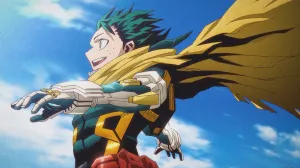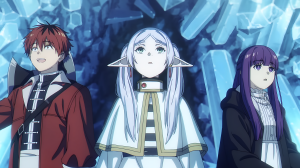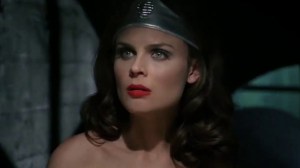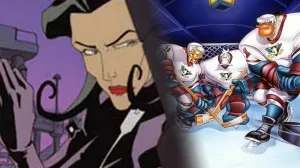Star Trek is about to embark on a voyage into a new frontier with the launch of the new Star Trek series from IDW Publishing. IDW has been putting out Star Trek comics since 2007 and celebrated the release of its 400th. Now it’s looking to elevate its Star Trek line with a new flagship title from writers Collin Kelly and Jackson Lanzing (Star Trek: Year Five) and artist Ramon Rosanas (Star Wars). It’s the first time that IDW has published an ongoing series titled simply and boldly “Star Trek” since its ongoing series focused on the cast of the rebooted film franchise wrapped up in 2016.
Videos by ComicBook.com
In fact, the idea for the new series came when IDW Senior Editor Heather Antos took over as editor of the Star Trek line. She approached Kelly and Lanzing and asked what a comic simply titled “Star Trek” should look like, to them. That question compelled them to revisit a Star Trek pitch that pre-dated their work on Star Trek: Year Five, the (very good) comic that bridged the gap between the end of Star Trek: The Original Series and Star Trek: The Motion Picture. That pitch was inspired by a 30-person tabletop roleplaying game campaign set in the Star Trek universe that Lanzing had run with Kelly and their friends, which sought to answer questions raised by the conclusion of Star Trek: Deep Space Nine.
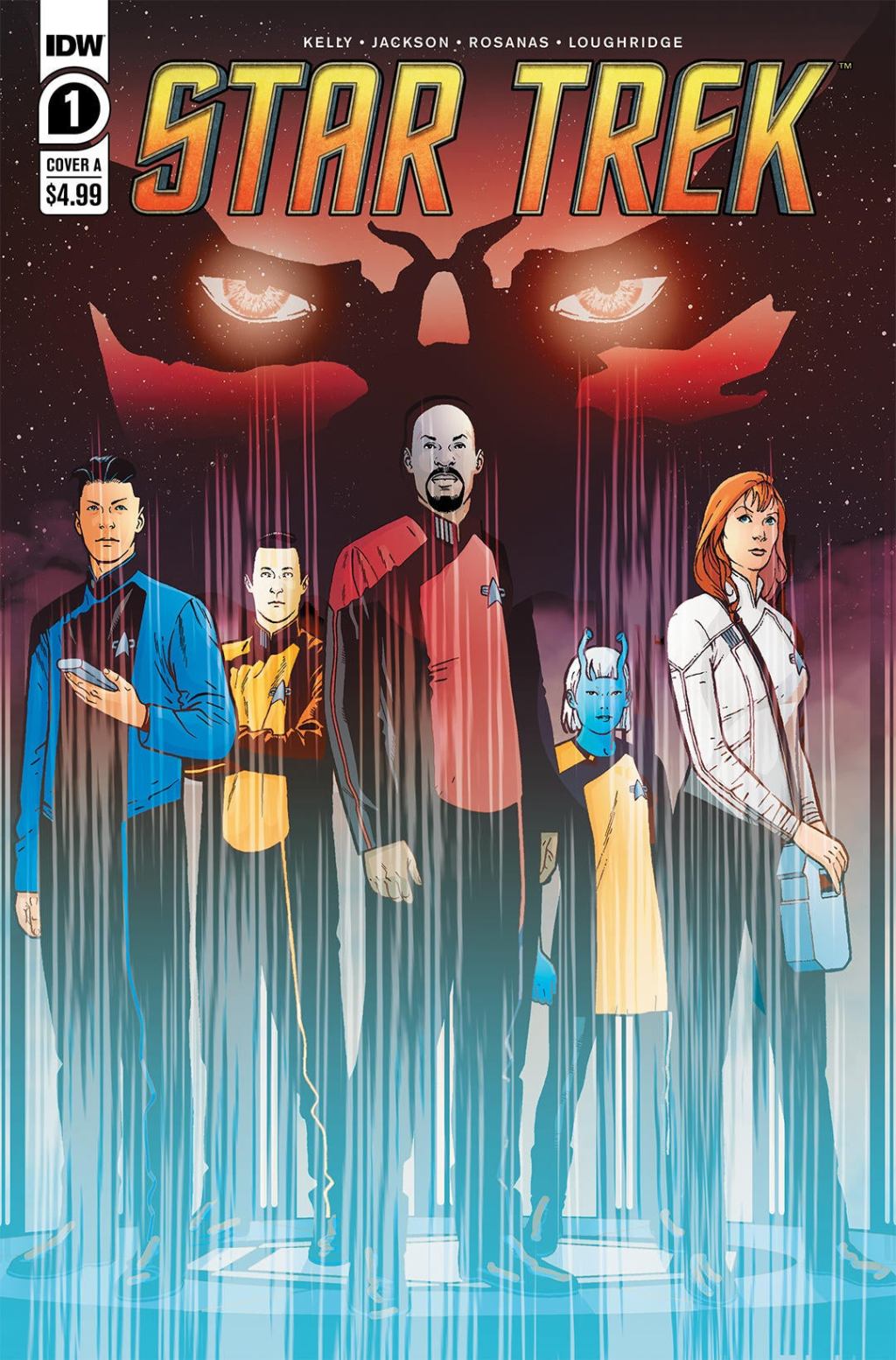
“We took that as an opportunity to take a look back at that initial pitch, now with several years of experience on Star Trek in our pocket, reevaluate that and look at, okay, what’s actually cool about this?” Lanzing told us during a conversation with him and Kelly. “What’s actually just us trying to adapt stuff from our RPG and have fun? What’s the core narrative here that really makes this sing, and what’s going to make it interesting?”
IDW Publishing announced the new series at San Diego Comic-Con, but the scope of it may not have come through in the press release. Star Trek #1 represents the first step in IDW’s attempt to give its Star Trek line the same prestige enjoyed by something like Marvel Comics’ Star Wars books. That includes treating the comic book as canon.

“This is real Star Trek,” Lanzing says. “This is as close as we can, on the comic side, to being canon. We will be canon until they un-canonize us. But we are working with the shows. We are in communication with the teams. We are encyclopedic Star Trek knowledge boys, so we’re on Memory-Alpha all the time, but our brains are effectively little Memory-Alphas. We’re already fed by all the canon that we grew up with, that being TOS to Voyager. So all of that stuff, if it was on the show, it’s canon.”
Star Trek #1 begins a story set during a gap in established Star Trek continuity between Star Trek: Voyager‘s series finale and the film Star Trek: Nemesis. It also features an eclectic mix of new characters and established favorites from across the Star Trek franchise, taking advantage of the fact that a comic book only needs to worry about characters and not actors.
“We are, for the first time in a Star Trek comic, really, outside of the Q event and things like that, treating Star Trek as a living universe where anyone can show up,” Lanzing says. “So if you have a favorite character from Star Trek, there is a good chance that they’re going to show up in this book somewhere.”
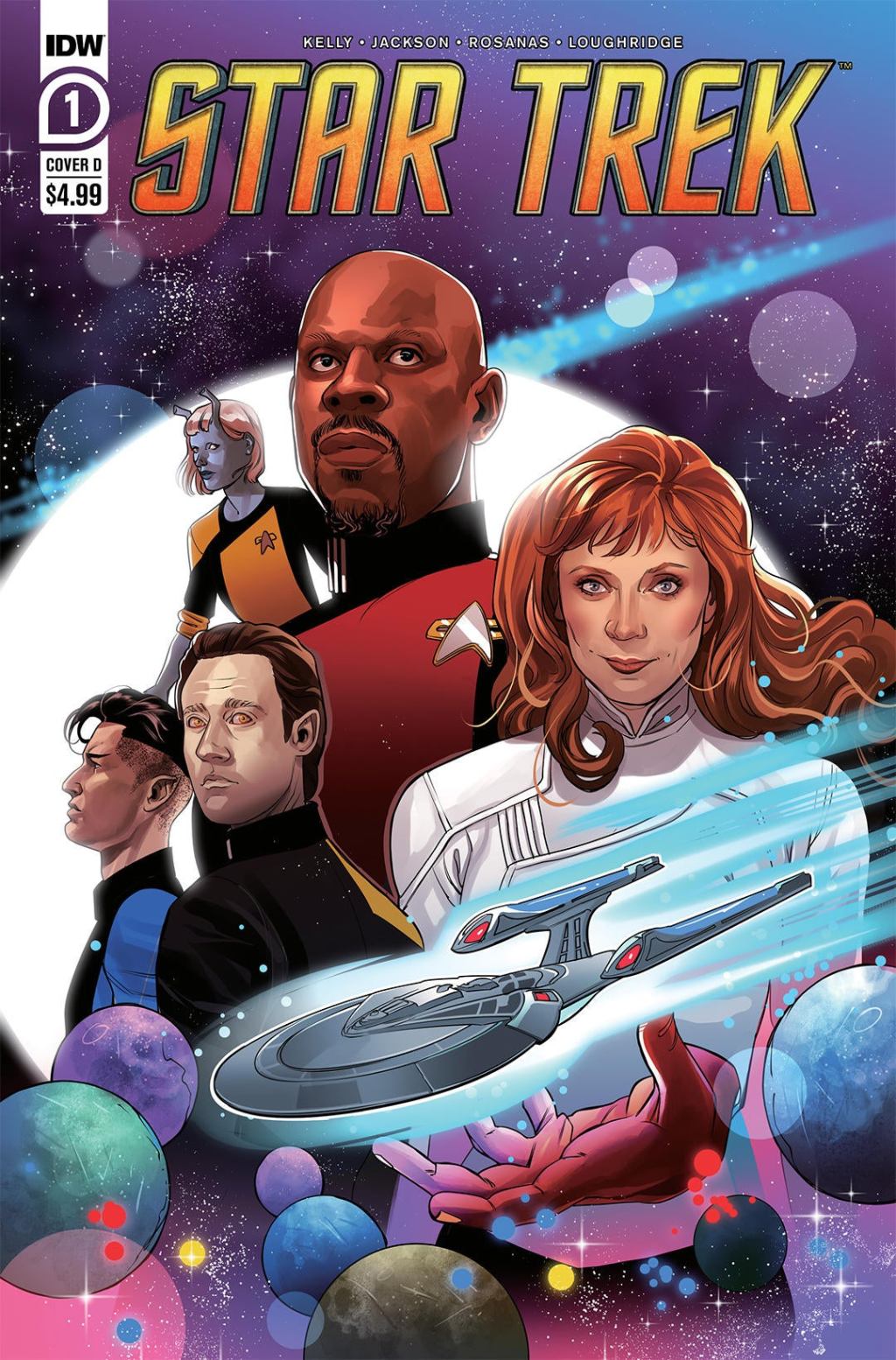
Kelly adds, “They’re giving us a lot of access to all the toys, with the understanding that at the end of it, we will put the toys back in the box. There is about a year and a half here of Star Trek timeline that is untouched, and within this, we can make all sorts of trouble as long as we put the characters that need to be back in the box for Nemesis.”
In a way, this new Star Trek series will replace previous Star Trek tie-in stories, such as the long-running and now-ended novel line, that told new stories while working under the assumption that these characters would not return to television. “We’re taking this as an opportunity to effectively fill those spaces, those timeline periods that a lot of those books and comics covered with new canon that lines up with the shows that have been created since then, because a lot of that stuff was created with the understanding there would never be shows again,” Lanzing explains. “Now we know that there will be, so we are trying to create new canon that exists inside that space. But these are the characters you know. This is the canonical Benjamin Sisko sequel story. This is the last ride of Data before Nemesis. These are those stories. This is what happened to Tom Paris after he came back from Voyager.”
Benjamin Sisko leads the book’s cast as the captain of the U.S.S. Theseus. He and his crew are on a mission to investigate the deaths of several of the godlike beings that inhabit the Star Trek universe. Fans got a taste of this in the prelude included with Star Trek #400, which featured Star Trek’s first omnipotent being, Gary Mitchell from Star Trek: The Original Series‘ second pilot episode, “Where No Man Has Gone Before.” That angle is born from Lanzing and Kelly’s desire to lean into what makes Star Trek unique.
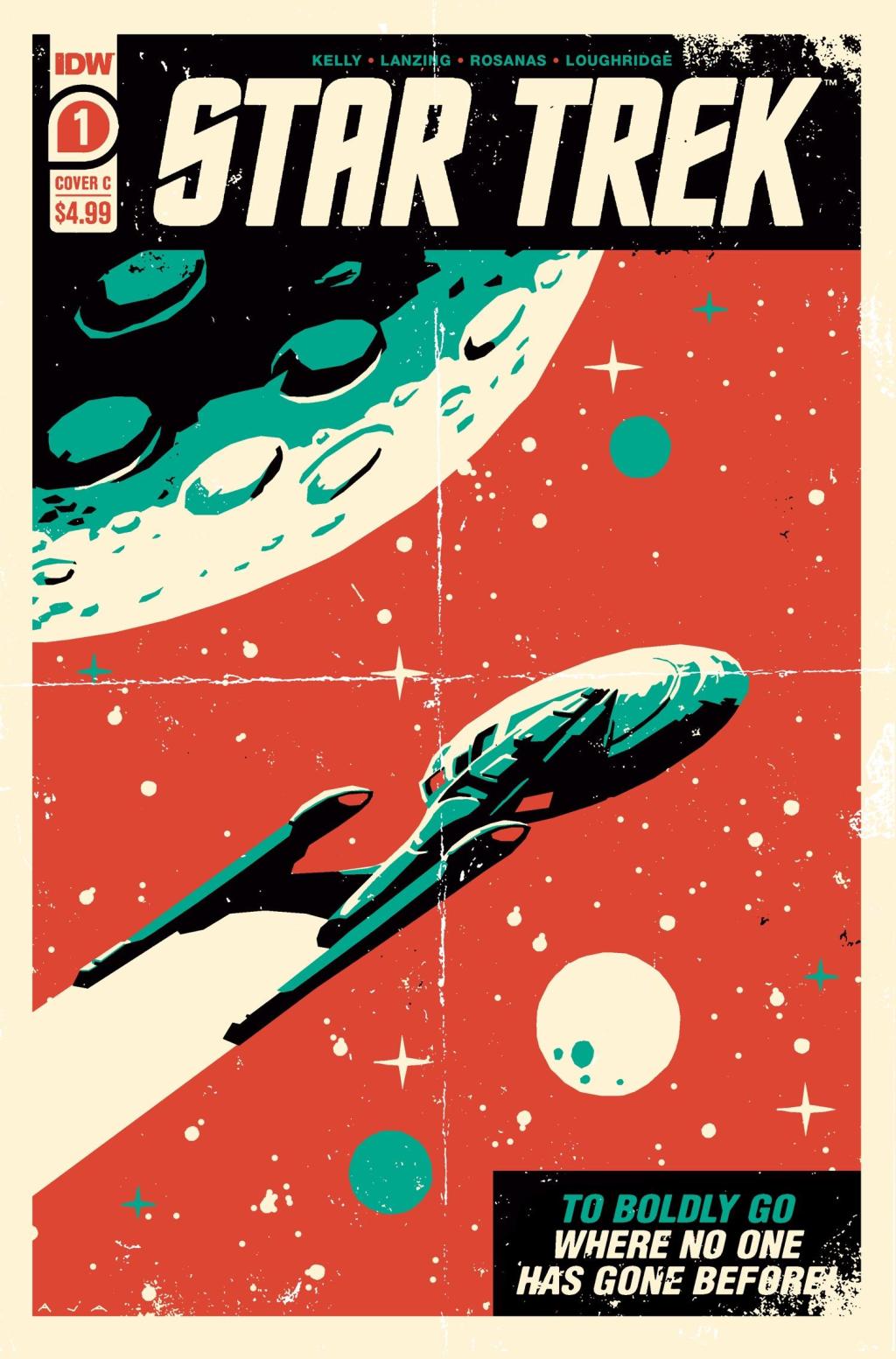
“One of the things that we came up with that really ended up being the anchor for this book is that, unlike a lot of other worlds, something that Star Trek has more than most, which is interesting for a thing that is as progressive and I would say utopian in a non-religious perspective as Star Trek is, is the presence of gods,” Lanzing explains. “And not how we think of them in terms of Olympus, though sometimes it’s literally Apollo, but also just tons and tons of what some scientists would call a high-level Kardashev species, these species that live in type IV and type V, these mad high-level technology species that are so high level as to be indistinguishable from magic or gods. And then you get to approach them from the perspective of a bunch of adventuring scientists who are trying to better understand them and better understand how they fit into our world.”
He continued, “Once we realized that we can anchor the story on a peril to the gods of the Star Trek universe and an unraveling of the space-time of the Star Trek universe, as that began to happen, it became extremely clear, much to our joy, that the only appropriate protagonist for this book would be Capt. Benjamin Sisko, our favorite captain, but the one who we never thought we could touch because his ending is so definitive. So then we were able to bring that back to Star Trek and say, ‘Look, if you like this pitch, it really has to be Sisko.’ And to our enormous surprise, they were like, ‘You know what? Go for it.” And that began Star Trek as it stands.”
With Sisko at the head, filling out the rest of the ship’s crew was, at least in part, a matter of meeting Sisko’s needs, which led to bringing Star Trek: The Next Generation‘s Data aboard as the first officer. “We knew we needed Data because if you’re going to have a protagonist who is caught up in the weft and weave of the impossible to describe, and you’re going to have a captain who’s focused on that kind of energy, you need a second who is going to help keep him in the box,” Lanzing says. “If you’re going to have your head in the cloud, someone needs to have their feet on the ground to be able to hold you down.”
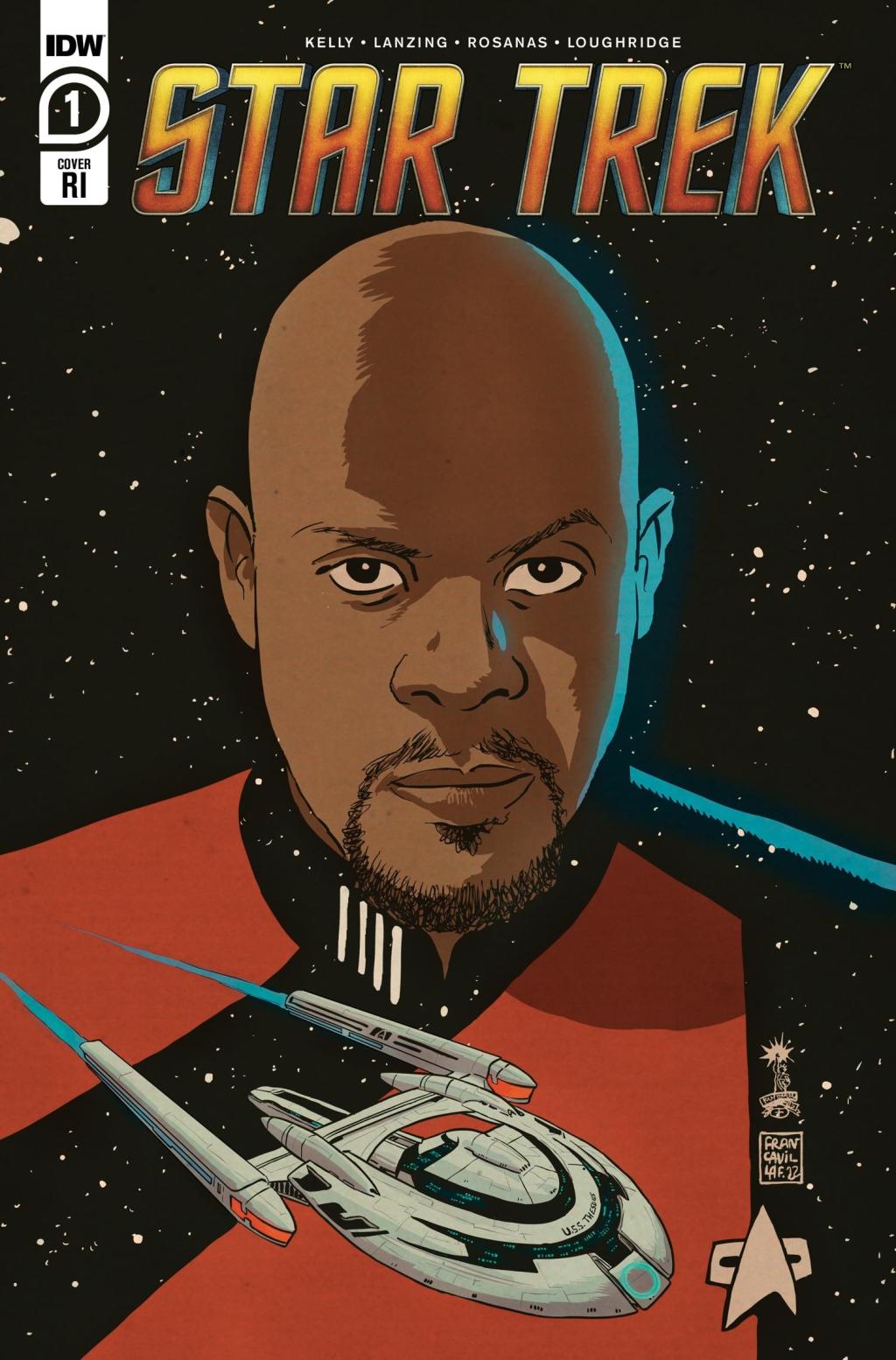
Next in the chain of command is another Star Trek: The Next Generation alum, Dr. Beverly Crusher, who has a personal stake in the fate of the gods given her son, Wesley Crusher’s, fate as a Traveler. However, Kelly and Lanzing see this as an opportunity to cast Crusher in her own story.
“We thought it was really time for her to get her own ride, to get a place where she got to do her thing, where she got to live in an investigation of her own,” Lanzing says. “One of the things that I always really loved about Beverly Crusher fundamentally is that she is a kind of a mad scientist. The only time we ever see her get really excited about anything other than motherhood is when she meets a scientist who she’s a huge fan of, who she saw at that conference that one time. She loves that stuff. What’s a bigger medical mystery than Benjamin Sisko? Here is a man who just spent three years in a state of fundamental space-time extraction and has come back physically and mentally changed. What is that? Who is that? And should that person be captaining a Starship? I think if you need to answer those questions, you put Beverly Crusher in the chair next to him, make sure that there’s somebody there, not just checking to see if he’s sane and aware, because you have Data for that kind of stuff, but to make sure that he is still human or that if he’s not human, what is he and can he come to grips with that.”
But it isn’t only about established Star Trek characters. The series introduces some brand new characters, including the Andorian named Sato and the Vulcan named T’Lir. Here, Lanzing again draws a comparison to Marvel’s Star Wars comics.
“Our objective is not to just play the hits,” Lanzing says. “We all feel like we need new characters, and new ways into these stories. One of my favorite Star Wars characters has never appeared in a Star Wars television show or movie, which is Dr. Aphra. Just love Aphra to death up and down. Aphra is a comic book character. There’s no reason Star Trek shouldn’t have Aphras, and that’s a mission statement from us on the book from the get-go. So you’ll notice there are two new characters on the bridge, which is our first step into that lane.”
Lanzing also hinted coyly at another way that the Star Trek comics line could resemble Star Wars: expansion. “Our objective is not to have just a single book,” Lanzing teased, “which is all I can say about that.”
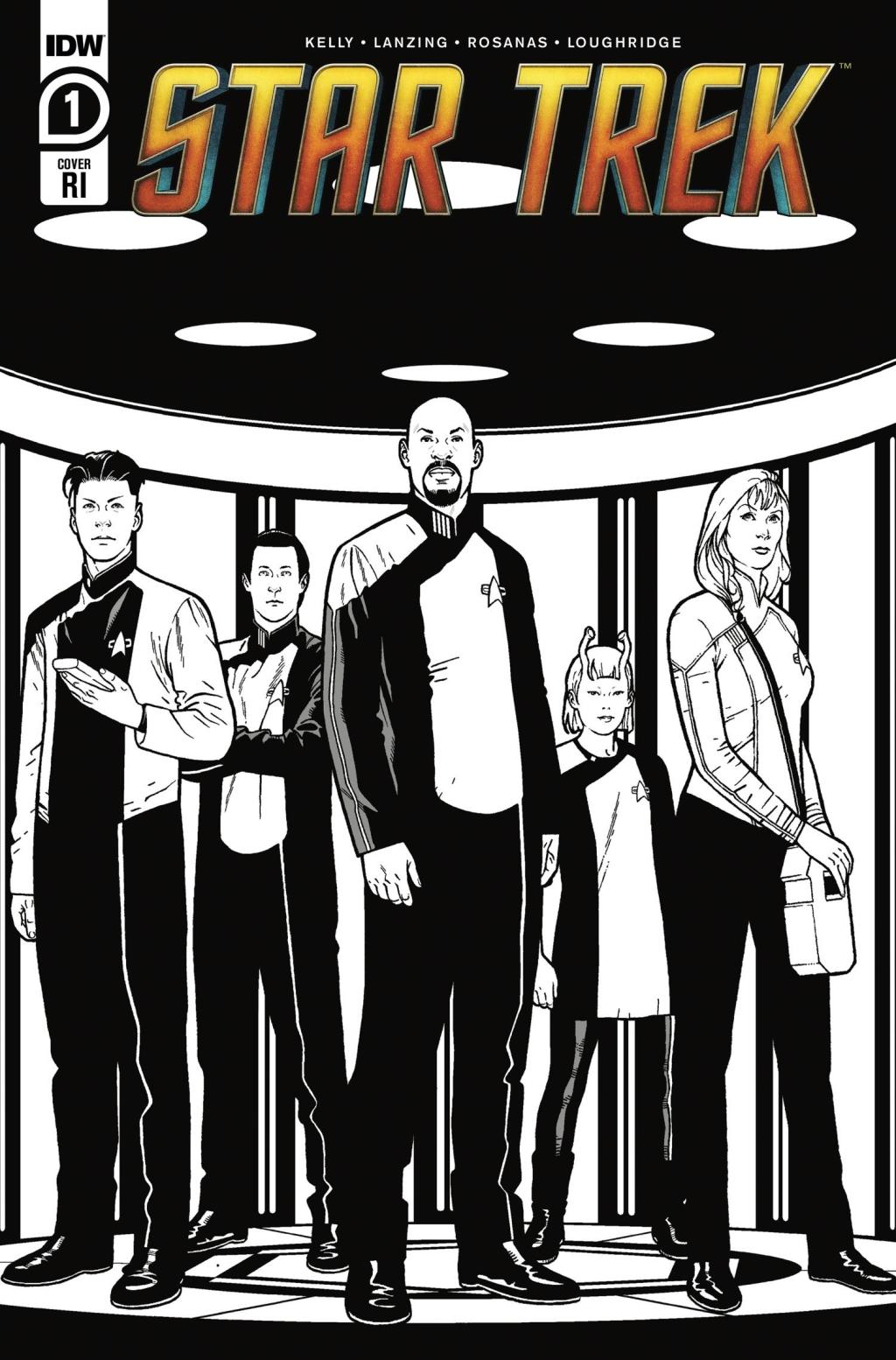
Of course, you can’t build a comic book line without an artist to define it, and it turns out that Star Trek can be a tough sell to artists, given that it is likeness-heavy and explosion-lite. That’s where Rosanas came in. A veteran of Marvel’s Star Wars line, the artist is at least as passionate about Star Trek as Kelly and Lanzing and proved eager and more than capable of designing the series’ new Starfleet uniforms and ship, the Theseus.
“I think one of the things that needs to get underlined with Ramon is that, when you give him images of awe, he is remarkable at them,” Lanzing says. “It’s one of the things that I noticed in his Star Wars work well before we had him on Star Trek. I was really taken by that with Ramon, primarily because our book is very much about the interaction between the normal and that which inspires awe. This book is about the gods of Star Trek, and so if we were going to do that and we were really going to embrace the idea that every issue was going to have some pretty weird visual stuff in it, having somebody who was able to evoke that was going to be really, really important. So we’re really excited to have Ramon for that reason.”
Filling out the creative team is colorist Lee Loughridge and letterer Clayton Cowles. “Lee Loughridge on colors is a get,” Lanzing says. “We have a killer team. I think Clayton Cowles has been announced, too. The team on this is just killing it, in terms of being able to bring a little bit more of a ‘big two’ comics or even indie comics vibe to Star Trek.”
“Prestige,” Kelly suggests. “This is going to be a Star Trek comic unlike any other Star Trek comic.”
Everyone involved with Star Trek #1 has high hopes for the future of the line. Those hopes rival the success Marvel Comics had revitalizing its X-Men line with the , going so far as to borrow an idea from those books, infographic pages, to help get new readers, and even new Star Trek fans, on board with the series.
“This might be folly to say considering the quality of that book, but I really want this to be able to grab an audience into the story anew the way that House of X and Powers of X did,” Lanzing says. “We’re really trying to take an approach here that allows you to step back and say, okay, you don’t know what a Federation is? Here’s a data page to show you what the Federation is. We want you to be able to step into Star Trek as a new reader and be caught up with it the same way that you would if you started reading a Batman book tomorrow, or you started reading an X-Men book, or you started reading Star Wars. We want you to feel invited into this universe rather than this to be a cool club for the cool kids.”
“We are going to be doing data pages, we got this permission, so we’re going to be able to provide just some hard facts for the audience to kind of catch up rather than doing a ‘previously on,’” Kelly adds. “We’re going to be able to feed some of the stuff to our readers, because the last thing we want is someone to be sitting there saying, ‘I don’t get what’s going on.’ We want you on board so you can be thrilled.”
“There’s a lot of people who don’t understand how awesome Star Trek is,” Lanzing says. “We would really like to convince them.”
Star Trek #1 goes on sale on October 26th.
This interview has been edited for clarity and length.



